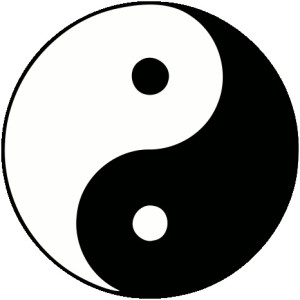Life is making us all stretch a bit more than we think we can these days. But the part that needs more emphasis, more stretching, is the right hemisphere of our brains, not the left. Insomnia, overthinking, worrying, even the “high” of constantly being plugged in to our computers are all examples of left hemisphere focus and over-activity. Wherever we put our attention, that’s where our synapses grow. The eyes and vision are constantly being over-stimulated by computers, flat screen reading on smart phones, tablets and TVs.
All this focused laser-like mental activity is substituting drive for stamina. We wind up draining what
reserves we have, drying up our body fluids and essence, further depleting our stamina. This issue has been raising its head lately with clients, as well as myself, and so I thought it would be a good topic for this blog.
We live in a culture that revels in imagery and quick, compacted information to be sorted at some point, creating a great deal of clutter in our heads. And like cleaning our rooms or desks, there needs to be time to sort and empty what is useful from what is not. It is the right hemisphere of our brains that is responsible for this practice of emptying our minds, which is basically turning down the left hemisphere activity. Clearing one’s mind could be as simple as establishing a block of time for reflection or daydreaming watching the clouds go by. Or it could be more structured as in meditation, chanting mantras, or prayer.
The right hemisphere is also where our other senses thrive, as well as our holistic vision, where our overview perspective exists, rather than our linear 2 dimensional “flat” mindset. In Chinese medicine it is the Yin aspect of our minds, [the receptive, the substantive, the reflective part] which needs to balance the Yang aspect [the collecting, the inquiring, the sharp focus part].
Then there are the activities that require both sides of the brain together, utilizing yin within yang and yang within yin. That is the latest Neuroscience information, that we use different parts of both hemispheres to do different tasks. These activities can include playing or listening to music, writing or listening to poetry, creating art, practicing visualizations, cooking, or just being outside smelling the air and luxuriating in the sun, or listening to birds during their morning symphony. These activities can be used to create balance in our minds and in our lives.
Here is a side note:
Learning a musical instrument is so important in grade and middle school because in utilizing both hands we are developing both hemispheres of our young brains as well as the nerve fibers between them. And this enhances overall brain function. Children who study a musical instrument do better in math and reading. And by playing in a band or orchestra they also learn cues from others, an important function of combined hemisphere activity.
There is an exercise I once read about that was a true awakening for me about the First-Nations people.
Part of the training of a young warrior’s life was going out into the forest, then sitting and looking around. After a few minutes, the young child closed their eyes and began telling what they saw, or as much as they could remember. Seeing is more than just our eyes and vision. It’s also our brain’s interpretation of what sights, sounds, smells, tastes, and sensory information available.
This poses the question:
What do you really see when you look? Are you looking with your whole brain or only part of your brain?
Here is a Ted talk that put a whole new light on right and left brain activity for me. Enjoy and practice the yin yang balance of brain activity as often as you can.
Peace.



Pretty! This has been a really wonderful post. Thank you for supplying this information. Kathleen Biron Chin